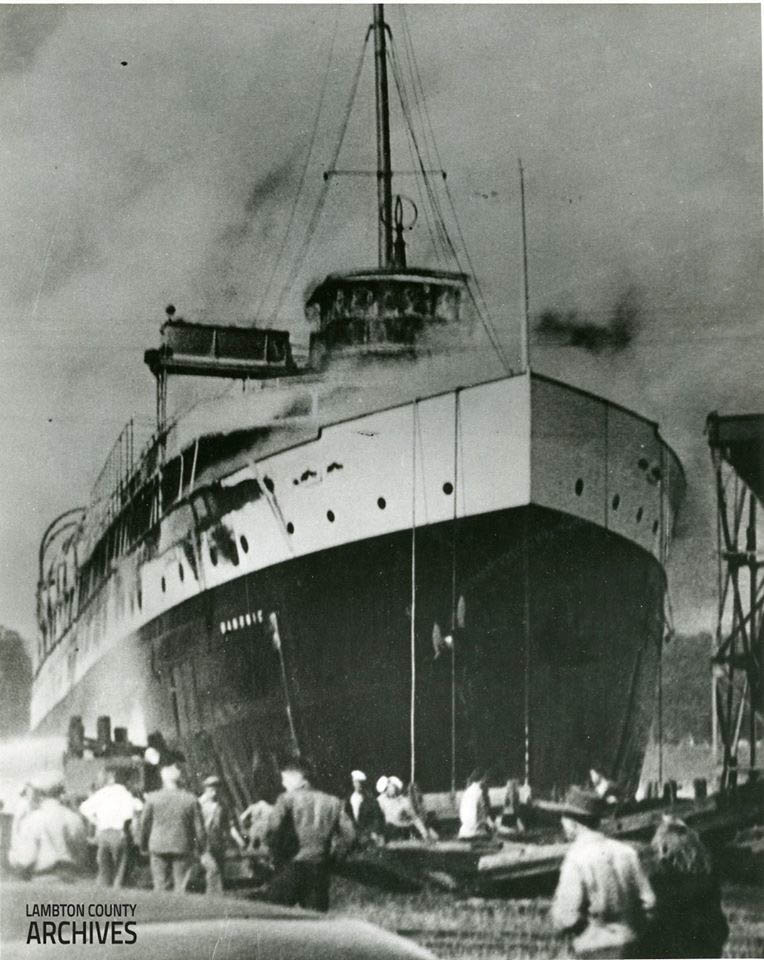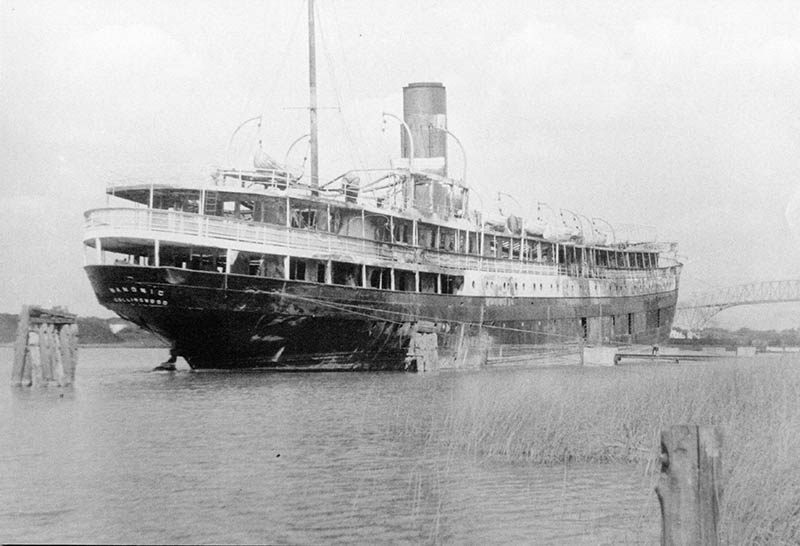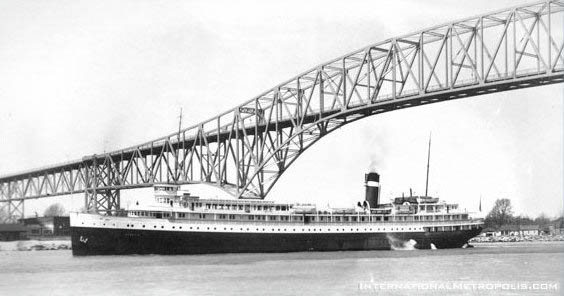Hamonic was a passenger vessel built for operation on the Great Lakes. It was launched in 1909 and served on the lakes until it burned in a devastating fire on 17 July 1945 in Sarnia, Ontario. Unlike the devastating fire that hit its sister ship, Noronic, in 1949, in which 119 passengers died, all Hamonic’s passengers and crews survived. (it has been reported than one person lost their life)

Sarnia is a town in south-western Ontario, Canada, with a population of 71,594 in 2016. It is the largest town on Lake Huron and in Lambton County. Sarnia is situated on the eastern side of the border between the Upper and Lower Great Lakes, where Lake Huron flows directly across from Port Huron, Michigan, into the St. Clair River, which defines the Canada – United States boundary.
The natural harbour at the site, initially attracted French explorer La Salle. On 23 August 1679, when he had horses and men pulling his 45-ton barque Le Griffon north toward the almost four-knot current of the St. Clair River, he called the location “The Rapids” probably because the current is fast there. Because of the petroleum industry in this region, Sarnia is sometimes referred to as ” The Chemical Valley” and at one time had the highest level of air pollution of any Canadian city (2011).
The Hamonic was a well-appointed passenger ship with plenty of facilities, including a barbershop, music room, ballroom and dining room with large windows to watch the scenes that passed. The Canada Steamship Lines, Hamonic conducted 7-day passenger cruises from Detroit, Michigan to Duluth, Minnesota which included a stop at Sarnia.

The Hamonic had docked around 5 a.m at Point Edward. (village near Sarnia) While most passengers were still sleeping, around 8:30 am, a truck making a delivery to the ship caught fire. The fire spread rapidly to the freight sheds, and fiery embers from the sheds rained upon the ship. Instantly the whole ship was consumed by fire. Once the Hamonic was in flames, people were unable to use the lifeboats, and some jumped from the ship to avoid the fire. Capt. Horace Beaton steered the ship away from the burning embers immediately, and ran it hard aground, then lowered ropes to get people off the ship.
Elmer Kleinsmith, a crane operator who operated a crane designed to charge and unload fuel, saw the blaze and with being close enough to the Harmonic, he used his crane’s bucket to rescue passengers from the inferno. 8-10 people were loaded onto the bucket at one time.
All 350 people aboard the ship survived (although rumour says one person died) but unfortunately the Haromic did not. With fire and water damage, the Haromic was scrapped and thus ended her touring.







